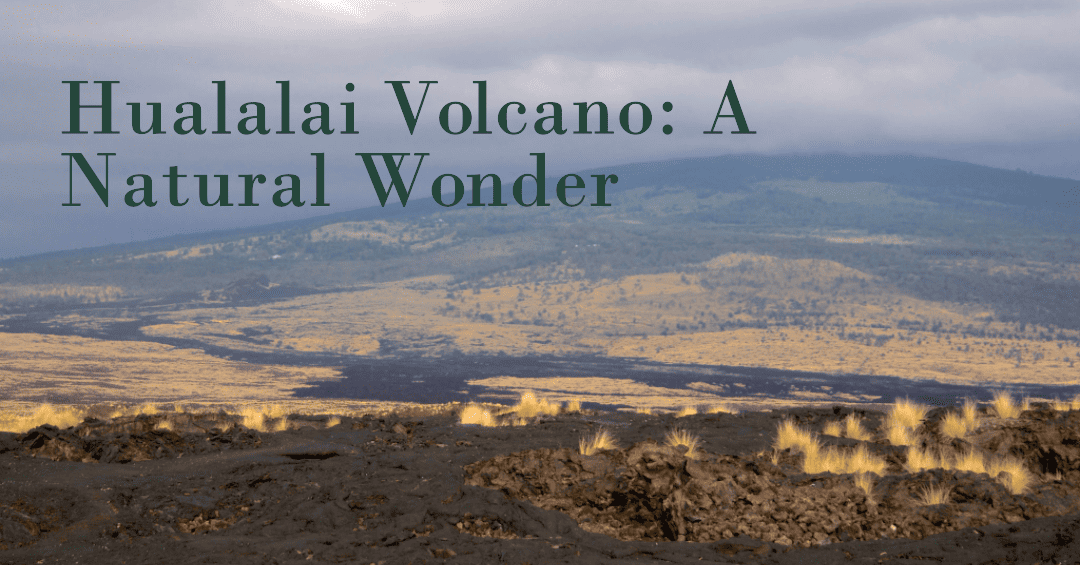The volcano Hualalai (pronounced [huwəˈlaːlɐi] in Hawaiian) is an active volcano on the Island of Hawaii a.k.a Big Island. It is the westernmost volcano and the third most active on the island. Its peak rises 8,271 feet above sea level. In the last 2,100 years, the volcano has had seven eruptions. Read this article to learn more about the volcano’s location, history, threat level, and recent eruptions.
Seven eruptions in the last 2,100 years
There have been seven eruptions at Hualalai in the past 2,100 years. The last eruption was about two centuries ago. The volcano has three rift zones and spatter cones. These zones converge about 5 km east of the summit. The volcano is composed of ninety percent Holocene material and more than half of its surface area is younger than 3000 years. The lava flow inundation map shows that over a quarter of the volcano has been inundated by lava.
The 1800-1801 Hualalai eruption produced fluid alkalic basalt lava flows, which entered the ocean near Kona. During the eruption, five vents were active, but only two of them produced lava flows. These lava flows formed in a stratified manner, and a few have been confirmed as trachyte maar.
The size of the Tonga eruption was equivalent to an asteroid if it had missed the Earth. The eruption was the largest of its kind in the last two thousand years, and it was estimated to have killed more than 100,000 people. In addition, the eruption was followed by mass crop failures and violent uprisings. There were even epidemics after the eruption. If a similar eruption occurred today, the economic damage would be in the trillions of dollars.
Hualalai’s Location on the island of Hawaii
Being the westernmost volcano located on the Island of Hawaii (Big Island). It is located near the main town on the west coast of the island called Kailua-Kona, which has its own airport and is more tourist-oriented than Hilo; the capital of the Big Island and the state’s largest city.
The US state of Hawaii is an island chain that spans the central Pacific Ocean, southwest of the continental United States. The main islands are Kauai, Lanai, and Oahu. In addition to the Big Island, there are also several smaller islands. They are known collectively as the Sandwich Islands, and were discovered by Captain James Cook in 1778.
Active volcano
The island of Hawaii is home to several active volcanoes. One of these is the Hualalai volcano, which is the third-youngest and most historically active. It is located on the southwestern slope of the Big Island. It is named for the wife of Hawaii Loa and was formed about 400-600 years ago. In addition to being an active volcano, Hualalai produces ash and lava that blankets the land.
The active volcano Hualalai is located on the western edge of the Big Island and is expected to erupt sometime in the next century. It contains more than 100 cinder cones and has three rift zones. It occupies approximately 7% of the Big Island and covers the ground underneath Kona International Airport.
Visitors should keep their distance to other visitors, and they should take care to protect their lungs. The volcano’s emissions, called VOG, can be hazardous to people with heart problems, respiratory problems, or a history of lung disease. Visitors should remain at least six feet from others, especially infants and pregnant women.
Threat level
The USGS categorized Huallai as a “high threat” volcano, indicating that the risk of eruption remains high. The threat level is determined by assessing the volcano’s proximity to population centers and air routes. Its eruptions have caused destruction of numerous homes, landmarks, and shorelines. However, the threat level is not indicative of how likely a future eruption will be.
The last eruption occurred more than two centuries ago. The lava flows that cover the lava fields are the greatest threat from a future eruption. Explosive pyroclastic eruptions occurred on the volcano during the Holocene period, but they only covered a small portion of the volcano. The eruptions were less explosive than those of neighboring volcanoes. In addition, there have been no recent ground deformation or seismicity at Hualalai.
Recent Posts
I. Introduction: The Ultimate Guide to Exploring the Hidden Gems of Hawaii Unveiling Hawaii's Popular Attractions: A Brief Overview Hawaii, the picturesque archipelago in the heart of the Pacific...
Introduction When people think of Hawaii, they often envision sunny beaches, lush landscapes, and tropical weather. However, there is a lingering question on many minds: Does Hawaii get snow? In...


